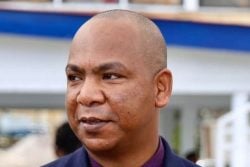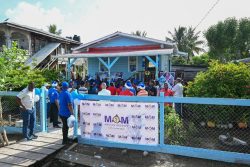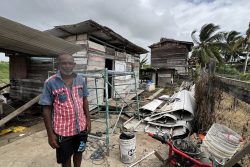Dear Editor,
The announcement this week that carbon credits newly approved by the Architecture for REDD+ Transac-tions (ART) Secretariat under the TREES (The REDD+ Environmental Excellence Standard) are being offered for sale to the Hess Oil Company raises profound questions and concerns for all Guyanese, but especially those Indigenous communities who have been protecting Guyana’s hinterland forests for millennia.
Guyana’s Indigenous peoples were never consulted on the proposal and monitoring reports submitted to ART — indeed, these reports were never even disclosed to us — much less on the sale of carbon from our forests to an oil company so they can greenwash their continuing pollution of the atmosphere. This is the same pollution that is actually causing climate change and is pushing the entire Amazon forest ecosystem towards collapse in a matter of years. What gives the government the right to sell the services our communities have been providing (in the form of carbon credits or emission reductions) without our free, prior and informed consent, a principle of international law the government has repeatedly endorsed and committed itself to?
I am aware that just a few weeks ago, with the world watching, representatives from the South Rupununi District Council (SRDC) presented our own plan to protect our territory at COP27, yet the government ignores us. Hardly a sterling example of respecting Indigenous people’s rights.
More disturbing still: the government got the credits approved by ART, despite the lack of any substantive discussions with Indigenous peoples, by getting some members of the National Toshaos Council (NTC) executive to approve a last-minute resolution in July supporting the Low Carbon Development Strategy (LCDS) and the sale of credits. It is clear that resolution was signed under pressure from the government, and that many Toshaos didn’t understand what they were signing. And how could they? There is no clarity about just how these carbon credit sales will benefit our traditional lands, both those that are titled and those that remain untitled. And if the government acknowledges that we should be compensated for protecting our untitled lands, why does the Government continue to drag its feet when we demand legal recognition of those lands? The so-called consultations on the LCDS were more of a limited information-sharing exercise. Communities did not have time to ask questions, let alone deliberate on whether they supported the revised strategy.
What’s more, now the government says the NTC Chairperson is the “legal representative” of Indigenous peoples in Guyana — on what grounds? The Amerindian Act gives the NTC no such authority. That role is vested exclusively in Village Councils and decision-making is done by village general meetings. Did any Village authorize their Toshao to sign that resolution? Did our Villages authorize the NTC executive or the NTC chair to speak on our behalf on such an important matter? There is no evidence that they did. Decisions that affect the lands and territories of indigenous peoples are subject to the free, prior and informed consent of the Village, not the NTC. This is a precedent that must not stand. The ART Secretariat is also at fault for approving the credits in these circumstances, not to mention when the government has repeatedly been found by international human rights bodies to have violated Indigenous peoples’ rights. So much for the “high integrity” carbon markets ART says it stands for.
Lastly, Vice President Jagdeo mentions that with the US$750M sale of carbon credits to Hess, some US$112m will be earmarked for Indigenous peoples, in line with the LCDS commitment to channel 15% of carbon revenues to indigenous communities. While this is an important amount of funding, the so-called benefit sharing mechanism described in the LCDS amounts to little more than a continuation of the community development grants, which are wholly discretional to the government, and can and have been used for political purposes. They can be offered or withheld on the whim of the minister. Is that truly “equitable benefit sharing”? The government refuses to title the rest of our traditional lands, leaving them open to a destructive patchwork of mining concessions and huge commercial agriculture projects. Is that, too, part of “equitable benefit sharing”?
President Ali and Vice President Jagdeo are right about one thing: the wholesale commodification of our forests is a key moment for Guyana. More importantly, it is a key moment for Guyana’s Indigenous peoples. We must tell the government that our voices will not be swept aside by the waves of profit and corporate greenwashing. These are our homes and our lands. Our voices must be heard.
Respectfully,
Nicholas Fredericks
Former NTC Chairperson




